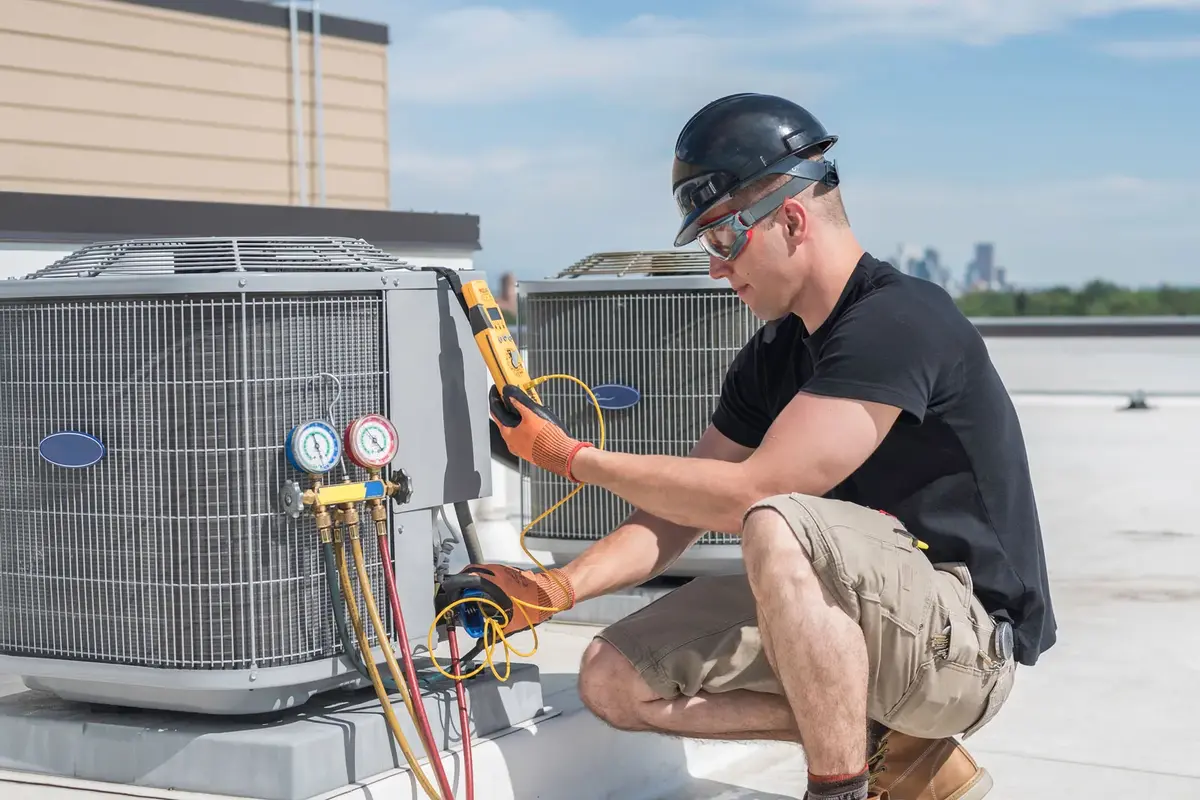Older homes often face unique challenges regarding indoor air quality and ventilation. Many of these homes were constructed before modern building codes emphasized air circulation, energy efficiency, and indoor environmental health. As a result, residents may experience uneven temperatures, musty odors, or stale air, which can affect comfort and well-being. We will explore how HVAC professionals address these challenges to create healthier, more comfortable living environments.
By assessing existing systems, upgrading equipment, and optimizing airflow, HVAC professionals providing HVAC services in Portland OR help older homes achieve efficient ventilation without compromising their historic character. Their interventions not only improve air quality but also enhance energy efficiency and reduce long-term maintenance costs, making these upgrades both practical and transformative.
Key Methods HVAC Professionals Use to Enhance Ventilation in Older Homes
Assessment and System Evaluation
The first step in improving ventilation is a thorough evaluation of the home’s current system and structure. HVAC professionals begin by examining ductwork, vents, and existing heating or cooling units to identify inefficiencies or blockages. Older homes often have duct systems that are poorly insulated, leaky, or partially obstructed, which reduces airflow and causes uneven temperatures throughout the home. Technicians also assess the building’s overall layout, insulation, and window placements, as these factors significantly affect ventilation.
By combining visual inspection with diagnostic tools, HVAC professionals can pinpoint areas where air movement is insufficient and identify those prone to moisture accumulation or stagnant air. This detailed assessment forms the foundation for creating a customized plan that targets the home’s specific ventilation challenges while preserving its architectural integrity.
Upgrading and Replacing Equipment
Older homes may have outdated or undersized heating, ventilation, and air conditioning units that struggle to maintain consistent airflow. HVAC professionals recommend equipment upgrades that match the home’s size and airflow requirements. For example, installing high-efficiency furnaces, air conditioners, or heat pumps ensures that the system can meet the space’s demands without overworking. Modern units are designed to distribute air evenly throughout the home, reducing hot and cold spots and promoting a balanced indoor environment. Replacing aging units also brings energy savings, as newer systems consume less electricity or fuel while providing improved comfort. This approach enables homeowners to enjoy improved air circulation and more reliable climate control, while reducing the environmental impact of their home.
Ductwork Cleaning and Sealing
Ducts in older homes often accumulate dust, debris, and even mold over the course of decades, severely impacting indoor air quality. HVAC professionals offer duct cleaning services to remove these contaminants, enabling air to flow freely throughout the home. Beyond cleaning, sealing gaps and leaks in ductwork is critical to prevent air loss and maintain consistent airflow. Leaky ducts can cause some rooms to overheat or remain cold, forcing the HVAC system to work harder and increasing energy bills. By cleaning and sealing the duct system, HVAC professionals restore efficiency and improve ventilation throughout the home. This process also helps minimize allergens, dust particles, and odors, creating a healthier living environment, particularly for individuals with respiratory sensitivities.
Installation of Ventilation Enhancements
In some older homes, natural ventilation through windows or vents is insufficient. HVAC professionals can install additional ventilation solutions, such as exhaust fans, air exchangers, or energy recovery ventilators (ERVs), to improve air circulation. These enhancements work to remove stale air and introduce fresh, filtered air into the home. For example, ERVs transfer heat and moisture between incoming and outgoing air, maintaining energy efficiency while improving indoor air quality. Strategically placed vents and fans can also target areas prone to poor airflow, such as basements, attics, or bathrooms. By integrating these systems, HVAC professionals ensure that the home receives adequate ventilation without the need for constant manual adjustments or reliance on open windows, which can compromise energy efficiency.
Smart Climate Control and Airflow Optimization
Modern HVAC solutions allow for precise control of airflow, temperature, and humidity levels throughout the home. Professionals can implement zoning systems or smart thermostats that regulate different areas independently, addressing the uneven heating or cooling common in older houses. By monitoring and adjusting airflow patterns, these systems prevent stagnant air pockets and maintain a comfortable indoor environment. Smart controls also provide homeowners with real-time data on air quality and energy use, enabling more informed decisions about ventilation and system settings. The combination of technology and strategic planning ensures that older homes benefit from advanced airflow management while maintaining the aesthetic and structural characteristics that make them unique.
Maintenance Plans for Sustained Performance
Improving ventilation is not a one-time effort; older homes require ongoing attention to maintain air quality and system efficiency. HVAC professionals create maintenance plans that include regular inspections, filter replacements, and system tuning. Consistent maintenance prevents blockages, reduces wear on components, and addresses minor issues before they escalate into costly repairs. Homeowners receive guidance on seasonal adjustments, optimal filter types, and ways to manage humidity levels, ensuring long-term comfort and health benefits. With a proactive maintenance strategy, the ventilation improvements achieved by HVAC interventions continue to perform effectively, supporting a safer and more pleasant indoor environment over time.
Effective ventilation in older homes is crucial for maintaining comfort, promoting health, and enhancing energy efficiency. HVAC professionals provide the knowledge, tools, and solutions needed to address the unique challenges presented by aging structures. Through careful assessment, system upgrades, duct cleaning and sealing, installation of additional ventilation, smart climate control, and ongoing maintenance, they significantly enhance indoor air quality and airflow. Homeowners can enjoy balanced temperatures, reduced allergens, and improved energy performance while preserving the character of their older properties. Investing in professional HVAC services ensures that older homes remain safe, comfortable, and well-ventilated for years to come, creating a healthier and more enjoyable living environment.

